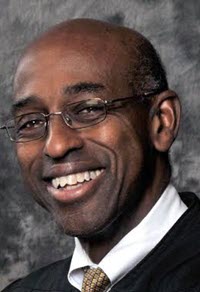Abstract
Excerpted From: Joseph A. Greenaway, Transatlantic Justice: Slavery in the Judicial Imagination, 13 British Journal of American Legal Studies 263 (Fall, 2024) (34 Footnotes) (Full Document)
 Throughout the history of humankind, certain challenges have puzzled society. Education, public safety and the economy are issues consistently at the forefront of our collective minds, but no permanent solution appears. However, in the last three hundred years, particularly in the United States and the United Kingdom, the most perplexing and vexing challenge has been race. At its core, race is unsettling because it unearths an intrinsic conflict and oftentimes a contradiction between our words on the one hand and our policies, laws and actions on the other. Are we countries that live up to the lofty ideal of democracy in which we embrace all who seek to join our citizenry or do we systematically exclude persons from the polity on the basis of race?
Throughout the history of humankind, certain challenges have puzzled society. Education, public safety and the economy are issues consistently at the forefront of our collective minds, but no permanent solution appears. However, in the last three hundred years, particularly in the United States and the United Kingdom, the most perplexing and vexing challenge has been race. At its core, race is unsettling because it unearths an intrinsic conflict and oftentimes a contradiction between our words on the one hand and our policies, laws and actions on the other. Are we countries that live up to the lofty ideal of democracy in which we embrace all who seek to join our citizenry or do we systematically exclude persons from the polity on the basis of race?
Many of you are in the throes of your studies. You examine the world as it is. For all its problems, you see some good and some bad. Our respective countries have attempted to eliminate racism and embrace diversity. What is racism? We certainly could have 100 lectures on its origins and progression. At its core, racism relies on the notion of inferiority. Diversity, another exceedingly complex term, is one of the ways society chooses to combat racism.
Each of you has splendid and numerous examples of how we combat racism. One small example, I was both struck and proud that the entire Premier League took a knee against racism and discrimination over a year ago when post-pandemic play resumed in mid-summer. The entire league continues to do so today. Hopefully, the popularity of Ted Lasso in the States will bring the message of fighting racism and discrimination even more resoundingly to all.
Today, I suggest that we take a step back in history to examine how our highest courts addressed racism through the lens of slavery. The crux of the institution of slavery is the subjugation of one's dignity and the enforced capitulation of one's free will. This process inevitably relies on the perceived inferiority of the slave and creates consequential inequality.
My modest objective today is to examine how England and the United States attempted to address this complex topic through the prism of the law at two particular points in time, through two now famous cases, written by two well-respected jurists, each of whom took an entirely different approach. Hopefully, it will help us understand how the law, at times, moves us towards, or away from, achieving our ideals.
I shall examine the words in their judicial opinions and how those words may have affected events, perceptions and the law in the time they lived and beyond.
I am sure you are asking yourselves--Judge, how far back are we going? Our travels will take us to the 1770s in England and Lord Mansfield, the Chief Justice of the King's Bench, and the 1850s in the United States and Roger Taney, the Chief Justice of the Supreme Court of the United States. Each jurist had a very similar task--answer a question that could profoundly affect their nation and the course of history. The question--if a slave moves from a place that allows slavery to a place that does not allow slavery, does that mean the slave is now free? Exactly what they decided and how they each went about it spoke to whom they were as individuals and judges. Why is it important? The study of slavery speaks to the justification of the dehumanization of an entire people for economic reasons without the responsibility of moral judgments. As tomorrow's leaders, you should hear and understand how the law, as pure and unencumbered as it may seem, can be both steadfast against and responsive to political and economic concerns.
In the United States, every issue that confronts society at one time or another comes to the steps of the courthouse. Judges are asked to resolve complex issues that society cannot resolve on its own. Those resolutions are not perfect. Judges are earnest in their efforts to come to the appropriate resolution, but we are not infallible.
[. . .]
What are the takeaways from today's lecture? Racism is not a new malady that has befallen our societies. It is deeply rooted in our histories. It is much more insidious than merely calling someone a hurtful name. It goes to the very essence of our community. What shall we do, what shall you do when racism rears its ugly head? Speak up. Fight. Engage. Often lost in these cases are the two men involved--James Somerset and Dred Scott. Their courage got the proverbial ball rolling. The rest as they say is history. Be participants. Get involved. Do your part. The constitutions and laws of both of our countries can be changed and amended when need be. Be part of the solution, not a complainer on the sidelines.
United States Court of Appeals for the Third Circuit


